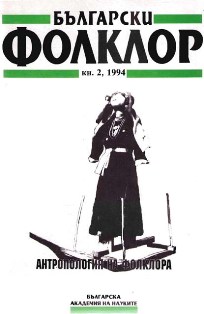Мъртвият и живите
The Dead Man and the Living Ones
Author(s): Vasil GarnizovSubject(s): Anthropology
Published by: Институт за етнология и фолклористика с Етнографски музей при БАН
Summary/Abstract: The article begins with a short survey of the ideas of E. Durkheim, R. Herz, B. Malinowski, L. Dumont, J.-P. Vernant and M. Block, concerning rites connected with death. The author examines such conceptual schemes in which differentiations is made between “soul” and “body”, or “bones” and “flesh”, as well as the dead person. The symbolic system in action, it attributes to the rite the dead body contrary and mutually exclusive meaning, like “both familiar and alien”, “both clean and unclean”, “being both here and there”. The one-year ritual cycle separates these meanings in the end: the flesh from the bones, the familiar from the alien, the clean from the unclean. Thus, the rite shapes the new status of the dead man – host, guest, ancestor. The agents of these transformations are persons, regarded as “alien”, “distant”, “outside” – mostly old women: the scheme of the ritual actors is negatively constructed – beyond kinship relations. Alongside, the use of the exactly these actors is motivated by the funeral ideology on the principle of analogy: for the alien old men and women death, the dead body and the uncleanness are not dangerous, they are the ones to carry out the transformation which is the aim of the ritual. The ideal for the funeral is “the widow”. At the same time, the persons treated in the rite as “alien”, are in fact “neighbours”, “close friends” – they are the participants in the network of everyday mutual help, of exchange of support, favours, feelings, words. Being distant in terms of kinship means respectively being close in terms of neighbourhood, which is an inexhaustible source for agreement between conservativeness of tradition and the needs of today.
Journal: Български фолклор
- Issue Year: XX/1994
- Issue No: 2
- Page Range: 12-23
- Page Count: 12
- Language: Bulgarian
- Content File-PDF

